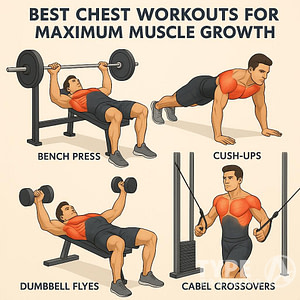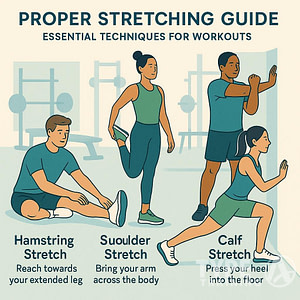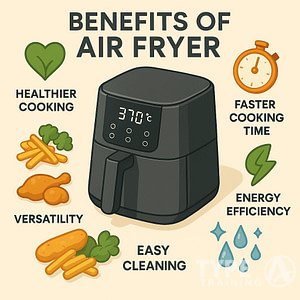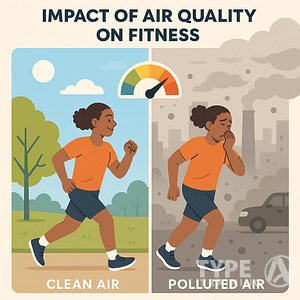Weight training is a critical component of a comprehensive baseball training regimen. It’s a misconception that strength training is only pertinent to those who wish to build muscle mass or improve their home run distance. In reality, weight training for baseball players focuses on enhancing overall athleticism, improving core stability, and increasing the functional strength required for the sport.
A tailored program can help amplify your performance on the field, whether you’re batting, pitching, or fielding.
A successful baseball weight training program should incorporate exercises that mimic the movements of the sport, thus enhancing the kinesthetic awareness and coordination necessary for intricate plays.
By engaging in a periodized training plan, you’re not just developing muscle, you’re also reducing the risk of injury, ensuring that your time off the diamond is minimized.
Popular posts:
Remember that proper technique, consistency, and attention to recovery periods are crucial elements in this sport-specific approach to strength training.
Key Takeaways
- Strength training for baseball augments athletic performance and injury prevention.
- Baseball weight training focuses on functional movements for sport-specific gains.
- Periodization and recovery are as important as the exercises themselves.
Understanding the Benefits of Weight Training for Baseball
When you engage in a tailored baseball strength training program, you’re not just building muscle, you’re enhancing your overall performance on the field.
This form of training develops explosive power, which is crucial for actions like sprinting to bases and making powerful throws.
Weight training benefits extend to batting power as well. By strengthening your core and upper body, you can expect to see an increase in the distance and speed at which you can hit the ball. Greater strength also translates to better endurance; you’re able to maintain peak performance for more innings, reducing fatigue-related errors.
Here’s a concise list of the benefits you’ll experience:
- Power: Enhance your ability to make fast, explosive movements.
- Strength: Build muscle for improved hitting and throwing.
- Speed: Faster reaction times and base running.
- Stamina: Sustain energy levels throughout the game.
- Athlete Potential: Unlock your optimal athletic capabilities.
Incorporating weight training into your regimen is pivotal for evolving as an athlete.
With a consistent routine, you’ll notice a marked improvement not just in your physical capabilities, but also in your mental sharpness, contributing to better strategic thinking and gameplay awareness.
Remember, the intensity and composition of your weight training program should match your current fitness level and the specific demands of your role in the team.
Approach weight training with a strategy aimed towards elevating your game, ensuring that every rep and set works towards unlocking your full potential as a baseball player.
Developing Foundational Strength
When you begin strength training for baseball, your primary goal is to build foundational strength. This initial phase lays the groundwork for more intense training and helps prevent injuries.
Focus on major muscle groups that play a key role in your performance.
Major Muscle Groups to Target:
- Legs (quadriceps, hamstrings)
- Back (latissimus dorsi, rhomboids)
- Chest (pectorals)
- Shoulders (deltoids)
- Arms (biceps, triceps)
- Buttocks (gluteals)
- Abdominals and Core (for core strength)
Key Exercises:
- Squats: This compound movement targets your quadriceps, hamstrings, buttocks, and, with proper form, strengthens your core.
- Deadlifts: A powerful exercise for developing strength in your legs, back, and core.
- Bench Press: For building strength in the chest, shoulders, and triceps.
- Overhead Press: This exercise helps strengthen your shoulders and upper back.
Your strength training regimen should include these basic exercises, performed with an emphasis on technique rather than heavy weights:
- Perform 2-3 sets of each exercise.
- Aim for 8-12 reps per set, ensuring the last few reps challenge your muscles.
- Allow for 48-72 hours of rest between sessions targeting the same muscle groups.
Start with weights that allow you to complete all reps with proper form.
Gradually increase the weight to keep challenging your muscles as your strength builds.
Consistency and proper form are key to developing foundational strength effectively.
Remember, a solid foundation paves the way for advanced training techniques.
Kinetic Training for Enhanced Performance
To elevate your game in baseball, including kinetic exercises like plyometrics and speed work into your training regimen is essential. These activities enhance your power, agility, and sprinting capabilities, providing a critical edge on the field.
Plyometrics and Agility
Plyometrics involve explosive jump training, which can significantly improve your lower body strength and increase your power.
They work by engaging your muscles in a stretch-shortening cycle that combines stretching immediately followed by contraction.
A sample plyometric routine includes:
- Box Jumps: Start with lower heights, ensuring proper form.
- Skater Jumps: Perform side-to-side movements to bolster lateral power.
Incorporating agility drills improves your coordination and balance, allowing for quicker direction changes—vital for fielding and base running.
Key drills here might be:
- Ladder Drills: Enhances footwork and speed.
- Cone Drills: Boosts lateral and multi-directional agility.
Speed and Sprint Work
Speed and sprint work condition your body to move at maximum velocity, an advantage for base stealing and outfield play.
Developing your sprinting technique can include:
- Form Running: Concentrate on knee lift and arm swing.
- Short Sprints: Practice starting quickly from various stances.
Working on your sprinting also promotes better mobility and range of motion, as sprinting requires full limb extension and dynamic movement.
Remember to:
- Include dynamic warm-ups to increase mobility before sprints.
- Cool down with stretches post-sprint to maintain range of motion.
Functional Exercises and Baseball Specific Movements
Incorporating functional exercises into your baseball training routine is crucial for developing the specific movements that mirror on-field play. These exercises enhance stability and power where it’s needed most: in your shoulders and hips. You’ll harness tools like medicine balls and resistance bands to fortify these areas.
Rotator Cuff and Shoulder Stability
Your rotator cuff muscles are pivotal for throwing and batting. To bolster shoulder stability:
- Stretching and Bands: Start with stretching to warm up the muscles. Then use resistance bands to perform external rotations, improving both flexibility and strength.
- Medicine Ball Exercises: Work on explosive power with medicine ball throws.
For example, standing perpendicular to a wall, throw the ball forcefully from shoulder height to train your rotator cuff for the intense action of pitching or hitting.
Hip Mobility and Power Drills
The hips are your center of power, instrumental for explosive movements like swinging and sprinting. To increase hip mobility and power:
- Lunges and Kettlebell Swings: Incorporate lunges into your routine to enhance joint mobility. Follow with kettlebell swings to develop the hip drive that underpins powerful baseball movements.
- Plyometric Exercises: Plyometric drills like lateral tire jumps encourage both agility and forceful hip extension, critical for that burst of speed on the bases or in the field.
Remember, focus on form to get the most out of these exercises and to prevent injury.
Your baseball workouts should reflect the dynamic nature of the game, integrating multi-joint movements and focusing on the mechanics of baseball specific movements.
Periodization: Structuring the Training Year
Periodization is critical for your training as a baseball player, allowing you to maximize strength, power, and recovery at optimal times throughout the year. By planning your training in distinct phases, you can improve performance and reduce the risk of injury.
Off-Season Strength and Mass Building
During the off-season, your focus should be on building strength and muscle mass, a phase often referred to as hypertrophy. This is Phase 1 of your training year.
- Sets and Reps: Focus on moderate to high volumes with sets ranging from 3-5 and reps between 8-12.
- Intensity: Your workouts should be intense enough to stimulate muscle growth but leave enough room for recovery.
- Frequency: Train each muscle group 2-3 times a week for comprehensive development.
It’s important to establish a solid foundation of strength during this time which will support more intense activities in the subsequent phases.
Preseason Power Conversion
As you transition into the preseason, the emphasis shifts to Phase 2: conversion to power. This is where you translate the strength and bulk attained in the off-season into sport-specific power.
- Sets and Reps: Utilize fewer sets (2-3) and reps (3-6) at higher intensities to foster power development.
- Plyometrics and Explosive Exercises: Implement exercises that involve fast, explosive movements to stimulate your fast-twitch muscle fibers.
In-Season Maintenance and Recovery
When the season starts, your objective switches to maintenance and injury prevention—Phase 3 of your baseball training.
- Frequency and Volume: Reduce training frequency and volume to avoid overtraining.
- Intensity: Maintain intensity to preserve muscle strength and power.
- Recovery: Prioritize ample recovery time and techniques to manage fatigue and repair muscles.
Balancing performance maintenance with adequate recovery during the in-season helps you stay at your peak and reduces the risk of injury, keeping you ready for every game.
Optimizing Training: Sets, Reps, and Recovery
When designing your baseball strength training program, tailoring sets, reps, and recovery times is crucial for achieving the desired strength, power, and endurance.
During Phase 3 of your strength program, you’re typically looking to maximize velocity.
Powerlifters often lift at 80-100% of their 1RM, yet as a baseball athlete, your objective differs. You need explosive strength that translates onto the field. Here’s a guideline that can help optimize your training routine:
- Strength & Power: To enhance your strength, focus on less than 6 reps per set with heavy weights. For power—which directly influences bat speed and throwing velocity—perform 3-5 sets of fast, explosive reps at 65-85% of your 1RM.
- Muscle Hypertrophy: Aim for a moderate rep range, typically 6-12 reps, and 3-4 sets. This helps in building lean muscle mass, important for endurance and strength over the game’s duration. Use moderately heavy weights for this purpose.
- Endurance: This is vital for late-game performance. Complete more than 15 reps per set with lighter weights. Endurance training is often overlooked but plays a crucial role in your overall athletic capability.
Regarding recovery, it’s not just about the days between workouts but the minutes between sets.
For muscle hypertrophy, rest periods of 30-90 seconds encourage recovery without completely replenishing the muscle’s energy source. This can encourage muscle growth. Contrastingly, strength and power necessitate longer rest, typically around two to five minutes, to ensure you can lift the maximum weight each set.
Preventing Common Injuries Through Weight Training
Strength training is a key component in preventing the most common injuries faced by baseball players. By focusing on areas such as the rotator cuff muscles and back muscles, you can improve stability and flexibility, which are crucial for a player’s longevity in the sport.
The rotator cuff is pivotal for throwing movements, and strengthening it can reduce the risk of shoulder injuries. Incorporate exercises like:
- External rotation with bands or cables
- Internal rotation motions across your body
- Shoulder abduction to enhance upward mobility
It’s equally important to build a solid core. A strong core contributes to overall stability and balance, which can help not only in prevention of back injuries but also in improving your performance. Exercises such as planks and Russian twists are vital components for developing core strength.
Lastly, always ensure you have medical clearance before starting any workout program, especially if you’re recovering from a previous injury. Your routine should include:
| Muscle Group | Exercise Example |
|---|---|
| Rotator Cuff | External/Internal Rotation |
| Core | Planks, Russian Twists |
| Back | Deadlifts, Rows |
Always remember to stretch and warm up properly prior to your workouts to maximize benefits and minimize injury risks. Opting for a balanced approach that targets all key muscle groups sets a foundation for both avoiding injuries and elevating your game.
Advanced Techniques for Maximum Strength and Power
To elevate your baseball performance, focusing on advanced weightlifting techniques can significantly enhance your maximum strength and explosive power. Implement these dynamic routines to take your athletic capabilities to new heights.
Olympic Lifts for Dynamic Strength
Olympic lifts such as the clean and jerk and the snatch are pivotal for developing explosive power and dynamic strength in baseball players. These movements simulate the ballistic and powerful actions that benefit pitching and batting.
- Clean and Jerk: Start with the barbell at your feet, explosively lift to a racked position, then complete the movement by driving the weight overhead with a powerful jerk.
- Snatch: From a wide grip, lift the barbell in one smooth motion from the ground to an overhead, locked-out position. This full-body workout is essential for enhancing neuromuscular coordination and power output.
Compound Movements for Muscle Synergy
Maximizing muscle synergy requires compound movements that target multiple muscle groups simultaneously. Prioritize lifts like squats, deadlifts, and overhead presses to develop maximal strength efficiently.
- Squats & Front Squats: Strengthen your lower body and core, engage your posterior chain and front squats to add depth to thigh and hip strength critical for baseball.
- Romanian Deadlifts: Focus on the hip-hinge movement to target your posterior chain, including your hamstrings and glutes.
- Overhead Press: Construct shoulder stability and strength which are crucial for throwing and batting movements.
Incorporating these techniques into your regimen will assist in achieving superior strength and explosive power, indispensable for peak baseball performance.
Equipment and Exercises for a Well-Rounded Program
To excel in baseball, you need more than just skill practice; a well-structured weight training program complements your on-field performance. Focus on equipment that facilitates a range of exercises targeting strength, stability, and core power.
Free Weights and Compound Exercises
Dumbbells and barbells are essential components of your training arsenal. They provide the versatility required for a comprehensive baseball training regimen.
- Dumbbell Squat: This exercise targets your lower body, critical for explosive running and power at bat. Hold a dumbbell in each hand at shoulder height or at your sides, squat down keeping your back straight, push through your heels, and return to a standing position.
- Dumbbell Bench Press: Strengthen your chest, shoulders, and triceps by lying on a bench, pressing dumbbells from chest height to full extension above you.
Compound movements like the barbell hip thrust will enhance hip strength and power, directly translating to hitting and throwing abilities. Position your upper back on a bench, with a barbell over your hips, thrust upward, engaging your glutes and hamstrings.
Bodyweight Movements and Core Training
Incorporating bodyweight exercises such as push-ups, pull-ups, and chin-ups can improve your upper body strength, affecting throwing velocity and swing power.
- Push-ups: Standard push-ups develop chest, shoulder, and triceps strength.
- Pull-ups/Chin-ups: These are excellent for your back and bicep muscles; maintain a controlled motion to maximize muscle engagement.
For core stability, crucial for any athlete, especially in baseball for batting and fielding, integrate exercises such as reverse crunches and planks.
- Reverse Crunch: Lie on your back, lift your hips off the floor, and bring your knees towards the chest to target lower abs.
- Burpees: A full-body exercise that improves endurance. Drop into a squat, thrust your feet back into a plank, perform a push-up, return to the squat, and leap up.
Don’t forget the finer details like calf raises for lower leg strength, which supports quick direction changes and sprints.
In your routine, ensure each muscle group is worked to develop core strength, usefulness in every play on the field, whether you’re swinging a bat or diving for a ball.
Frequently Asked Questions
In this section, you’ll find targeted answers to common questions about creating an effective weight training program for baseball players.
How do you weight train for baseball?
As a baseball player, your weight training should focus on building explosive power, agility, and endurance. A balanced approach includes exercises for core strength, shoulder stability, and leg power. Incorporating compound movements such as squats, deadlifts, and presses can effectively enhance these attributes.
How many days a week should baseball players lift?
Baseball players are often recommended to lift weights 3-4 days per week during the off-season for optimal strength development. In-season, you might reduce the frequency to 2-3 days per week to maintain strength while minimizing fatigue.
How do you bulk up for baseball?
To bulk up for baseball, you should combine a high-protein diet with a strength training program that emphasizes progressive overload. Focus on multi-joint exercises and ensure adequate recovery time to support muscle growth.
Do baseball players lift weights on game day?
Lifting weights on game day is usually not advised, as it may lead to muscle fatigue that can affect performance on the field. However, some players might engage in a light routine focused on dynamic movement to stay activated.
What should a college baseball workout include?
A college baseball workout should include a dynamic warm-up, plyometric exercises, strength training, and flexibility work. Emphasis should be placed on rotary strength for batting and throwing, lower body power for base running, and shoulder stability.
What are the essential exercises for a high school baseball strength program?
A high school baseball strength program should prioritize functional movements that mimic on-field actions.
Essential exercises include lunges for lower body strength and rotational medicine ball throws for core power.
Band work is also important for shoulder health and stability.













